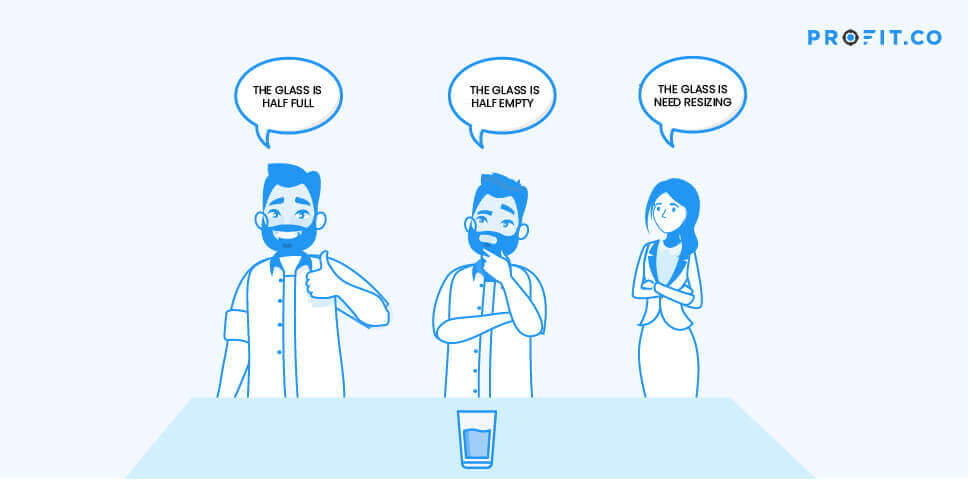
As iron sharpens iron, so one person can sharpen the skills of another. It’s natural for humans to look at a problem from only one perspective – our own. However, looking at a problem from multiple perspectives and angles enables teams to develop better solutions and resolve any conflicts.
Embracing external perspectives
Businesses must continually look at their business from the outside in. It’s easy to get trapped in the swing of operations and lose sight of external perspectives.
Example: B2B and B2C businesses should continually clarify their value propositions and anticipate client and customer needs to generate value. Customers will pay for a product or service offered if they believe the transaction is personal to them. Don’t be an ostrich with your head in the sand! Pay attention to the market and the competition. Get involved in cross-functional projects! Connect with your customers and identify touchpoints for improvement. Meet people outside of your network. You’ll be wonderfully surprised with what you can gain by maintaining an external perspective.
Internal Perspectives
We all inevitably run into issues with other company employees that necessitate resolution. When interacting with other workers, it’s important to keep in mind what they want and what they are likely to be most apprehensive about.
Example: You’re the CEO of a succesful startup. It’s the end of the second quarter and one of your employees approaches you, asking for a raise. Take the time out of your busy schedule to listen their perspective before offering or denying an increase in pay.
5 Tips for developing multiple perspectives at work

1. Be open-minded.
Companies should strive to establish an open, positive culture in which everyone has the right to share their perspectives.
2. Adaptability
Let’s say that you’re an incredibly talented marketing director. You’re convinced that you know exactly what you’re doing with this promotional campaign. Suddenly, a team member comes along and points out flaws in your approach. Stop and listen to what your coworker has to say! Ask them why and how they reached those conclusions and work towards improvement.
3. Avoid Confirmation Bias.
Avoid simply reaching out to people who agree with you. If you stick to what you know, you’re merely confirming your own perspective.
4. Honesty
Always be truthful. Continuous, accurate feedback is fundamental to positive training and improvement.
5. Empathy & Emotional Intelligence
Make sure to consider the perspectives of your coworkers and employees. Understanding where someone else is coming from will improve collaboration and workplace interactions.
Quantitative/Non-Human Perspectives
If your company is using formulas, algorithms, CRM software, or machine learning models to help you make better operational, financial, and investment decisions, it’s always important to have a clear, human understanding of what these models entail.
Do you understand the inputs and assumptions that go into your formulas, algorithms, or models these to the extent where you can affirm that what you’re doing is sound? Or are you indiscriminately following them?
How does OKR help with Multiple Perspectives?
OKR Methodology, by its design, helps businesses to look at a problem from multiple perspectives. For example, let’s say you’re the Chief Marketing Officer (CMO) of a retail company. You want to open a new store in Manhattan.

As you can see, OKR forces you to consider your objective through the lens of various departments. Once you create your objective and key results, figure out which people and departments can contribute.
Concluding thoughts
Are you genuinely open-minded and inquisitive about considering outside perspectives, or are you simply looking for arguments that confirm your own biases? When you encounter perspectives different from your own, are you viscerally rejecting it or truly considering them through the other person’s eyes to consider how accurate and logical it is?
You definitely won’t have all the answers – but someone else might!
When you change the way you look at things, the things you look at change

